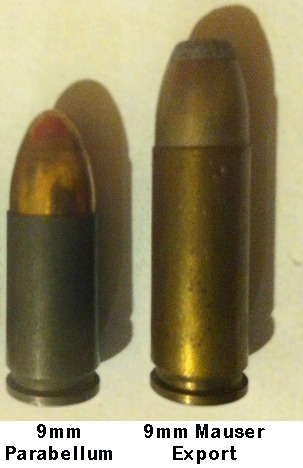That he may be, but he had never personally seen a single Danuvia 39M in real life.
Everything in that article is based on second hand information, most of it the Soviet evaluation of the gun in late 1944. It’s important to note that at that time the Red Army was not searching for a new submachine gun, but looking for elements to copy for their assault rifles.
Despite the Danuvia clearly using a pistol cartridge, it was identified by the Soviets as a “carbine”. They also failed to identify the obviously Hungarian markings and instead believed that the weapon was produced in Switzerland.
Soviet engineers had also never seen a 9mm Mauser export before and mistaken it for an intermediate cartridge.
The Danuvia 39 and 43M are very maintenance heavy rare submachine guns with only about 40 000 produced and Hungary was the only country by 1942 to use 9mm Mauser export, making ammunition for the guns very scarce. The soviet engineers at the time of testing only had one Danuvia 39M at their disposal, clearly in very bad condition, no spare parts and the document explicitly mentions that all ammunition they had available for it were rusty and dried.
Firing test was carried out and found the Danuvia 39M inaccurate with very poor results, however only a handful of Mauser export (all in terrible condition) were fired with the rest being 9mm parabellum that was never intended to be used by 39M.
Furthermore Soviets had no idea that 39M and 43M ammunition was not interchangeable which clearly caused feeding issues.
These tests were so brief that they didn’t even notice the actual problems of the weapon such as: the folding magazine which could fold in while firing if it was held incorrectly.
I think it’s already clear that these “tests” don’t prove anything other than how clueless Soviets weapon engineers were.
The only other nation to carry out firing tests with the gun is Hungary, their results are clearly much more accurate.
The theoretical firing range is 1000m
The effective firing range is 600m
The theoretical is obviously impossible even with the immense power of the 9x25mm Mauser, but it’s not just the muzzle velocity important for trajectory but also the weight of the projectile is equally important, a light projectile becomes prone to change course over long distance due to natural elements such as wind, air resistance and humidity etc.
Mauser export is slightly even heavier than both 8mm kurz and 30.cal, but has less muzzle velocity because its still a pistol round, albeit a very powerful one. Making the range of 600m plausible.
The effective 600m was obviously achieved in semi-auto while in full-auto its effective range is about 300-350 m which is still double the range of most WW2 SMGs.
The Hungarian museum of warfare even confirms that the 1942 evaluation of Haditechnikai intézet is indeed correct. Considering that they have more access to these weapons and documents than anyone else in the world, they must be right.







